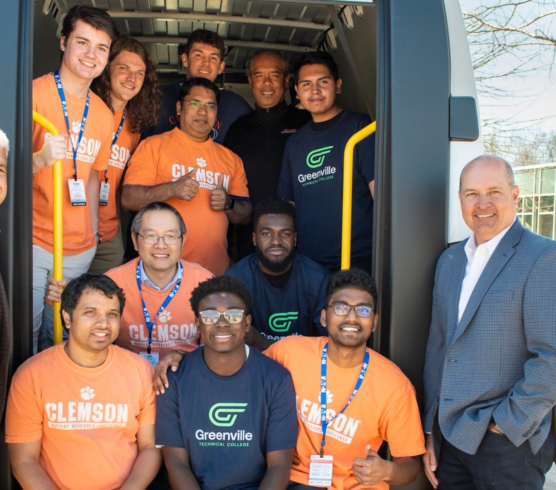With the final competition creeping closer and closer, the design and installment of the last and vital components of the Penn State University Advanced Vehicle Team‘s vehicle are now in full swing. The latest of these components is the Auxiliary Power Unit (APU), one of the most important features of our Malibu. Without the APU, the vehicle would only have a range of 50 miles.
From left to right—Mike Rihl, Zack Cameron and Tyler Quinn looking proud beside Penn State’s vehicleIn order to finalize their APU, the mechanical team is fixing the coupling between the UQM generator and the Weber ethanol engine. Connecting the engine to the generator not only allows the vehicle to run, but extends the vehicle’s range as well. Once the battery pack depletes to a certain state of charge, the APU engages, sustaining the vehicle and enabling it to continue running.
Last year’s design of this component had a slight fault, which inspired an entirely new system of design for this year’s vehicle. During last year’s competition, the team’s smaller flywheel and use of multiple parts caused a systemic mechanical breakdown of this coupling. To stop this from happening again, the team will utilize a larger flywheel with a substantially higher mass moment of inertia, which will reduce the torque spikes transferred to the generator from the engine.
“Fabrication of the flywheel has begun and this year’s design is a major improvement over last year’s,” stated Tyler Quinn, Mechanical Team Leader. “It helps complete a vital part of our vehicle.”
Without the APU, the team’s vehicle would not run for very long. However with the new system intact, PSU’s team is on its way to another successful year at competition!



